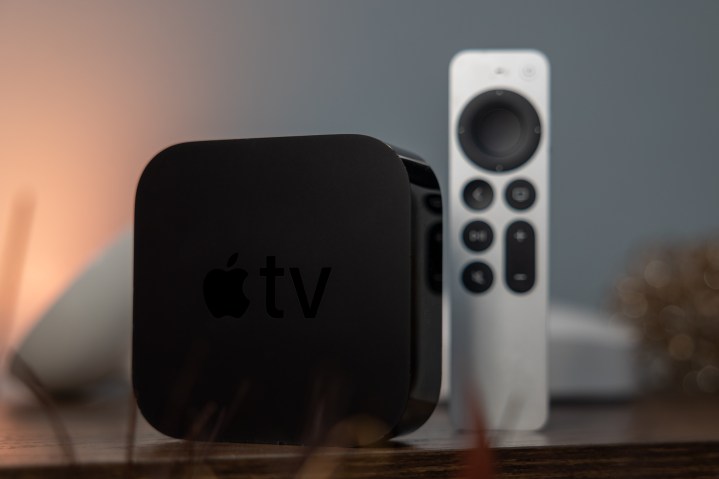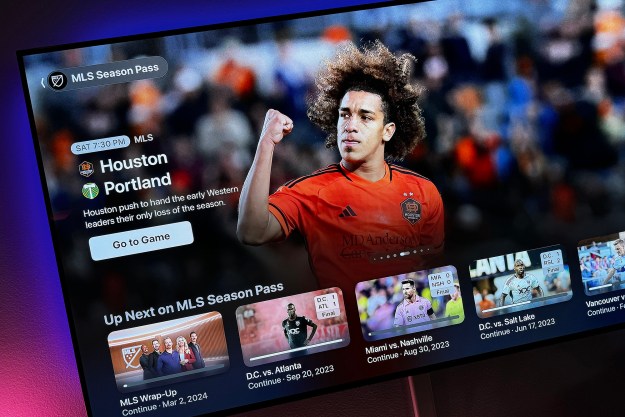We’ve reached that point in the Apple news cycle in which rumors run rampant ahead of an event — in this case, the September iPhone 14 event — and SEO checkboxes are being checked. It’s how we know nature is healing.
That doesn’t mean every iPhone rumor is going to come to fruition, however. Far from it. To wit: new AirPods Pro are possible but unlikely on September 7.
Another product that’s had a few headlines over the past few weeks is the Apple TV. (The hardware, not the similarly-named app.) And, generally speaking, that’s been in the vein of something like “everything we know about the new Apple TV.” To be clear, nobody knows anything about the new Apple TV.
Heck, even the rumors are as thin as can be. Let’s take a look.

Is there a new Apple TV coming?
From a binary standpoint of yes or no, there almost certainly will be a new Apple TV at some point. While it’s far from a bestseller, Apple TV remains a relatively important option as a HomeKit hub. That is, it’s a method by which those in the Apple ecosystem can tie together all their smart accessories that use the HomeKit protocol.
So it would be a fairly major shift if Apple were to kill off Apple TV anytime soon. And to be clear, there have been no indications as such.
Rumors of updates to Apple TV have been pretty thin. A major one points to a Bloomberg piece about how Apple was prepping updates to a lot of products which, of course, is what Apple does. Apple TV merely got a single mention in the piece, with no other details, except to say that we could see it anytime between now and the middle of 2023.
A previous rumor from Apple analyst Ming-Chi Kuo points to the possibility of a new Apple TV in the second half of the year, which is anytime from now through December. That unsourced rumor points to “a new version of Apple TV that improves cost structure.” More on that in a second.
What’s in the new Apple TV?
Here’s the thing that neither of those rumors addressed: What’s in it for you? What would a new Apple TV bring to the table that would justify an update or be enough to get someone to buy for the first time?
First, some context. Apple TV 4K — which, to be clear, is the only version you should buy — last got an update in May 2021. (There’s still an HD model out there. Don’t get it.) That update came about three and a half years after Apple TV 4K was first introduced.
A refresh in the fall of 2022 perhaps would be a bit “early,” but not really unprecedented. The fourth-generation Apple TV was released in October 2015, and the first Apple TV 4K arrived not quite two years later. So something “new” certainly is possible any time now.
An updated Apple TV almost certainly will happen at some point — the question is when and what’s in it.
But what would a “new” Apple TV 4K mean? Are we talking sweeping new features? Is Apple ready to support 8K resolution, which 99.9% of the population certainly doesn’t need yet?
Or is it possible that there will be some sort of Apple TV dongle that’ll cost less? Folks have opined on that given Kuo’s “improves cost structure” tweet, but we’re not sold. There’s very little reason for Apple to make some sort of Apple TV device that competes alongside the $50 offerings from Roku, Amazon, or Google.
On the other hand, if it cost consumers closer to $100 than $200, nobody would complain.
If we do happen to get a new version of Apple TV 4K in the near future, you almost certainly can expect updated internals. (Because that’s how updated hardware works.) And that could actually give a little credence to the “improves cost structure” line. Maybe the update isn’t about you — maybe it’s about reworking things so it doesn’t cost Apple as much to produce. Look at it like this — the current iPhone SE uses the A15 Bionic processor. The current Apple TV
All that said, the simple fact is that nobody really has any idea what a new Apple TV 4K would look like or what new features it could bring.

Is this happening or not?
We wouldn’t put money on it, but mostly because it’s in no way a high-stakes bet. There’s absolutely nothing wrong with the current Apple TV 4K that requires an immediate product release at the next available opportunity.
Really, the announcement of a new Apple TV is as much marketing and opportunity as it is anything else at this point. September is mostly as good as October, given the niche state of Apple TV. If we don’t see one by Halloween, however, we might as well wait until next spring sometime.
If you’re absolutely in need of an Apple TV 4K right this second, you can for $140, which isn’t a bad price at all. It’ll serve you well for years.
But if you can wait or just aren’t in a hurry? Hang tight. A new one is coming … eventually.
Editors' Recommendations
- Samsung’s new 98-inch DU9000 4K TV is just $4,000. Can it beat TCL and Hisense?
- What is Google TV? Here’s everything you need to know
- AirPods 4: Everything we know about Apple’s next wireless earbuds
- Samsung QN90D first look: setting the bar for 2024
- Philo: everything to know about the live TV streaming service




